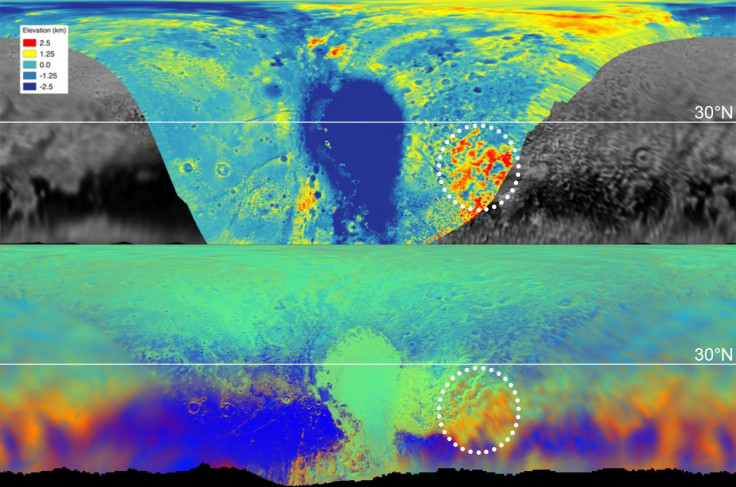Nasa uncovers the mystery behind Pluto's 'giant blades of ice'
The skyscraper-sized formations are made entirely of methane, says Nasa.

Ever since New Horizons made its flyby with Pluto in 2015, there was a certain level of mystery surrounding Pluto's "giant blades of ice" and now Nasa seems to have found the answer. According to a report published by the space agency, the blades are made entirely of methane and they have likely formed as a result of a specific type of erosion that left behind "dramatic crests and sharp divides".
Described as Pluto's "bladed terrain" the region is informally named Tartarus Dorsa. The ridges are found at high altitudes along the dwarf planet's equatorial belt. According to the report, they can be several hundred feet tall, some as tall as New York City skyscrapers, and have been described as one of Pluto's most puzzling features.
A team from the Nasa Ames Research Center in California determined that the structures were formed first when methane freezes in Pluto's upper atmosphere at extreme altitudes similar to the way frost is formed on Earth.
"When we realized that bladed terrain consists of tall deposits of methane ice, we asked ourselves why it forms all of these ridges, as opposed to just being big blobs of ice on the ground," said research lead Jeffrey Moore. "It turns out that Pluto undergoes climate variation and sometimes, when Pluto is a little warmer, the methane ice begins to basically 'evaporate' away."

The methane ice then sublimates –a process by which methane goes from solid to gas directly, without melting into a liquid first– into the atmosphere, leaving behind tall, jagged spikes.
Such bodies are also found on Earth, at high altitudes around the equatorial belt called penitents, but the ones on Earth barely reach a few meters in height, says the report. They also form as a result of sublimation.
This finding has revealed that Plutonian climate has changed dramatically over millions of years and that has caused this geological activity to be ongoing. Millions of years ago, there was a lot of methane gas that froze in the planet's atmosphere that has since burned off as the climate got warmer. It means that the atmosphere on the dwarf planet is a lot more dynamic than previously believed, says Nasa.
© Copyright IBTimes 2025. All rights reserved.





















